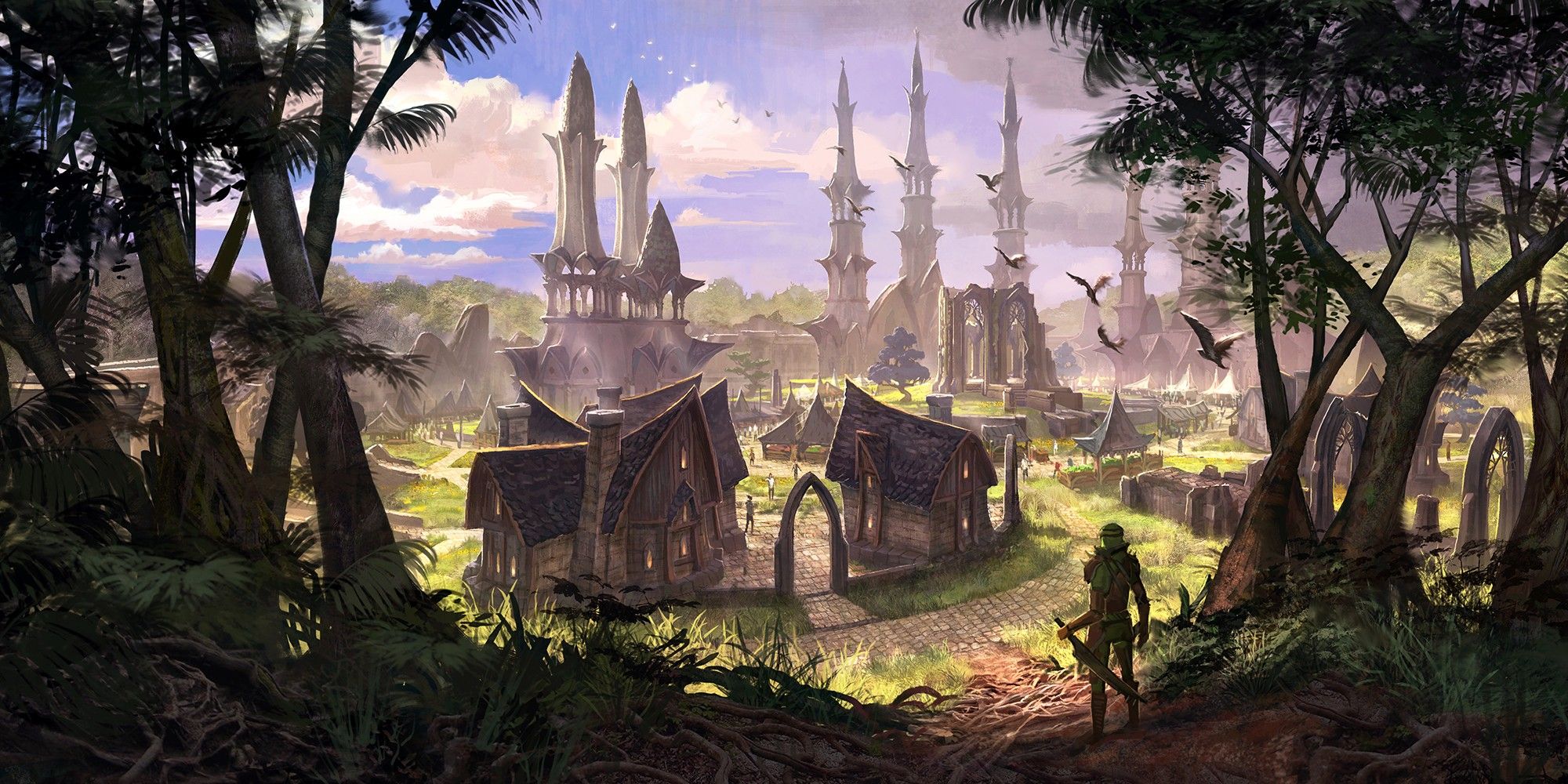
In addition to the upcoming Blackwood chapter of Elder Scrolls Online, fans of the MMORPG can also expect new graphics enhancements for next-gen consoles. Elder Scrolls Online is developer Bethesda and ZeniMax Online Studios' MMO set a millennium before the events of the single-player Elder Scrolls series. Players can immerse themselves in a sweeping fantasy landscape and explore many new and familiar locations across Tamriel, soon to include the Deadlands from Elder Scrolls IV: Oblivion.
With the release of the Blackwood chapter, fans of Elder Scrolls Online will also receive a base game update that includes Elder Scrolls Online: Console Enhanced, which optimizes the game for PlayStation 5 and Xbox Series X/S. The graphical enhancements will ensure players on next-gen consoles have an opportunity to take advantage of the technology and experience Tamriel, its distinctive zones, and its residents in greater detail.
Since 2014, the art style of Elder Scrolls Online has evolved significantly, incorporating aspects of the single-player games, other games in the fantasy genre, and even real-world cultures. Jared Carr, Studio Art Director for ZeniMax Online Studios, and CJ Grebb, Art Director for Elder Scrolls Online, recently sat down with Screen Rant to discuss the evolving art style, the process for creating new and visually distinct locations across Tamriel, and some of what players can expect from the graphics enhancements when the Blackwood chapter releases later this year.
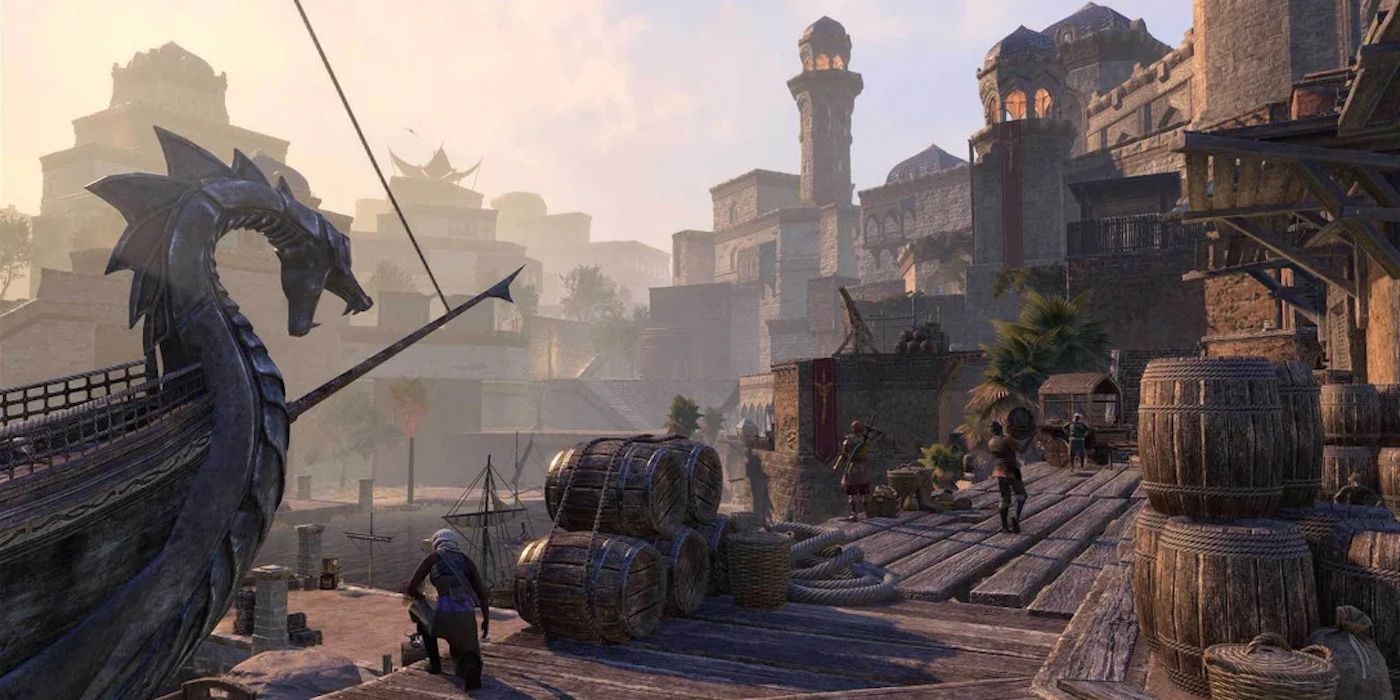
I wanted to talk about the process of enhancing Elder Scrolls Online for the next gen of consoles and making ESO look visually distinct. Looking at the concept art, it's clear a lot has changed. What would you they say drove some of those changes?
Jared Carr: When we started the project, there was a desire for it to be fairly heavily stylized in order to address the fidelity issues and the limitations that MMOs typically have, but also fit in the MMO space. Of course, think back 12 years ago, and that was the thinking.
But over time, as we developed the game and developed the world, we started shifting it more towards what the real player expectation is for the Elder Scrolls universe - which is that things are treated a little bit more realistically. And that's reflected over time, year over year, as we've developed zones. We started off a little more heavily stylized, and we've just slowly shifted that more towards realism.
It looks fantastic. What inspired the art style, apart from the Elder Scrolls single-player games?
Jared Carr: At Elder Scrolls, what we do is look for real world cultural references to draw upon, because there's so many cultures within Tamriel and within Elder Scrolls. Sometimes it's more obvious than other times, but we really look to real world references as we're developing a culture, and we really think in terms of developing each race and each culture within the world.
So, depending on which race you're talking about, we're going to look at different references for inspiration.
CJ Grebb: It's kind of like what Jared was talking about earlier. When we develop the look of new zones or new cultures, the more grounded we are and the more realistically grounded in some sort of real world reference we find ourselves, the more it feels like Elder Scrolls almost every time. So, I think that's a large part of it as well.
Jared Carr: specifically, when we talk about developing culture, the idea is to create subtext in the environment. Visual cues that all add up to these cultural identifiers, so it's in the pottery, it's in the architecture, it's in the motifs and in the architecture, shapes and designs of the armor - tying all that together so that it looks and feels cohesive.
As you know, Elder Scrolls is a huge world with lots and lots of content and lore, so it helps us to distinguish groups and distinguish people and distinguish places within the world to give each thing its own identity. If that makes sense,
What does the research process entail for figuring out how you want to adapt real worlds into the fantasy world?
CJ Grebb: We have a supremely talented group of concept artists. Typically, the process goes that once the direction of a new piece of content is decided on, the writers and the game directors and the creative director Rich Lambert have all come together and agreed upon a place where we're going to go. They will put together a big document that we get to read over, and then we start to send that over to concept artists.
There's probably already some sort of impression of what culture we're going to be influenced by. If it's a culture that we've already handled in Elder Scrolls previously, we have a head start. But it might be a new culture, and that lets our concept artists just go out into the world and start researching real locations on Earth; real cultures, places in the Pacific Islands, or maybe a culture off the coast of Italy somewhere.
All that is put together into big mood boards and big inspiration boards, and then we all get together in the art department and we talk it over. "Hey, this looks great. I think this works as a reference for this new culture that we're going to go into. I think that this coastline is a great place to start." And from there, it's concept paintings and refinements until we get a look that everybody is really, really excited for.
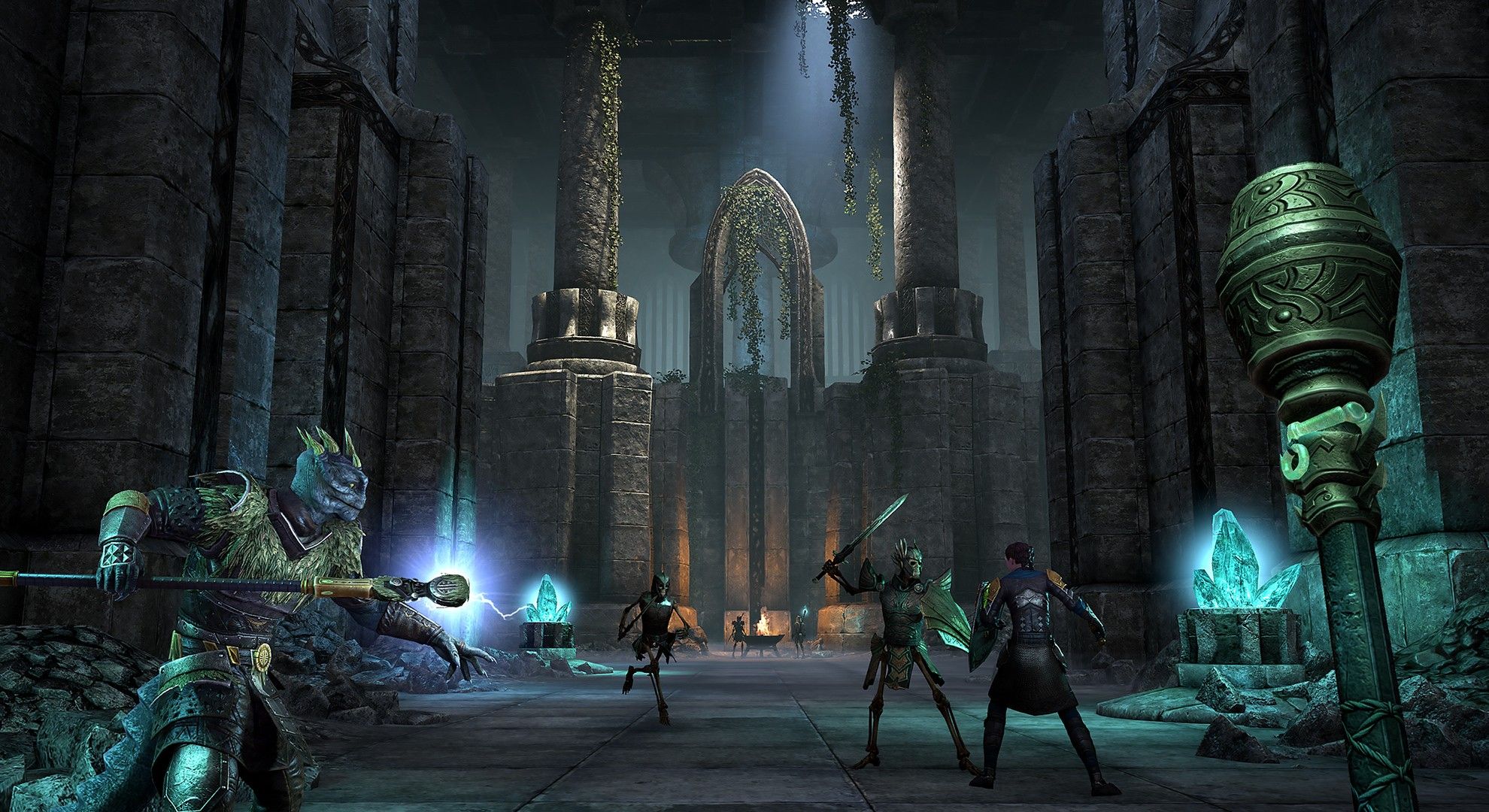
That's fascinating, I really had no idea that these environments are coming from real places.
CJ Grebb: It's absolutely the best place to start. Real places on Earth are full of imagination and full of real history, which is part of what makes it feel more Elder Scrolls every time. The more grounded, the more realistic, the more aged you can make it feel, the more it starts to feel like Elder Scrolls. And the real world is a great place to start for that.
What was the biggest challenge about enhancing art for next gen consoles, and what was the most difficult asset or environment to enhance?
Jared Carr: A lot of the work on updating for next gen is on the engineering side, in terms of just updating the renderer: what we can draw, graphical features, things like that. Unless I'm mistaken, CJ, it's less about changing the art.
At this point, it's no exaggeration to say we have hundreds of thousands of art assets in the game at this point. We can't just go through and just re-author everything, but the engineering team can take the source and up-res textures in certain places. They can improve shadows and do those kinds of things.
CJ Grebb: The real challenge was getting the best bang for our buck, in terms of: what do we upgrade, and do we get a real impact out of that upgrade from the visual standpoint? What art assets can we upgrade and get a visual boost from versus how much of a footprint do we want to add to the download of the game? Bigger textures means more memory to have to account for.
And like Jared said, this wasn't a remaster. It was leveraging the advanced technology of the consoles to bring the best out of what was already existent in the engine. Finding that balance was an enormous challenge. But like Jared said, it was mainly a technical one. It was engineers going in there and finding out where the efficiencies are, and where the best place to put our efforts were.
Are you guys excited for the different look of enhanced console play?
CJ Grebb: I absolutely am. If you have an advanced enough machine, you can really get the most out of the visuals of the Elder Scrolls Online. The next generation coming up really lets you see the game in the best light it's possible to see it, which is tremendously exciting. Because although the game looks great on current gen consoles, it can look even better, and knowing that people are going to be able to play it looking better would make any artists happy as a clam.
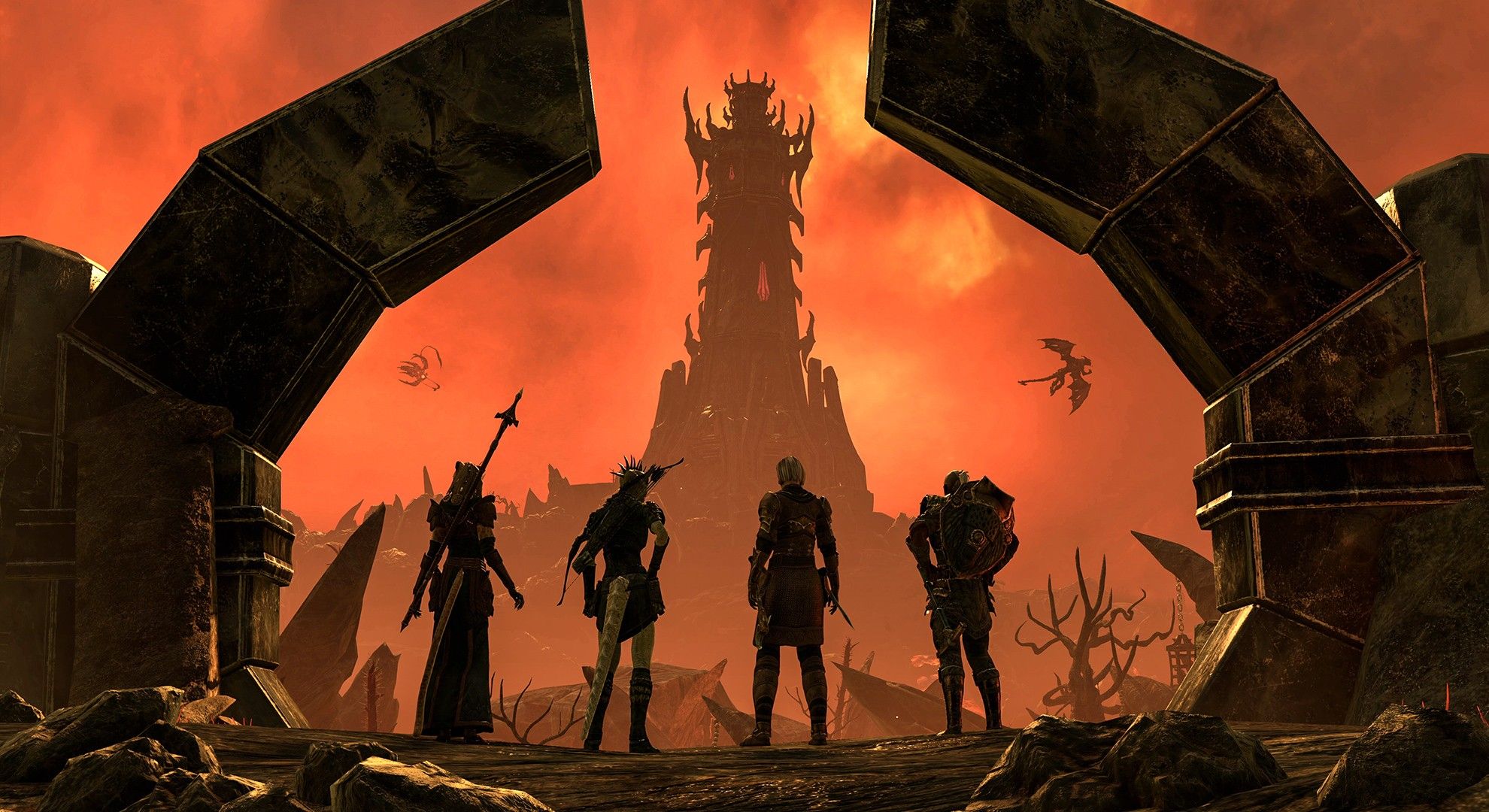
Do you guys have a favorite environment asset, or any aspect of the art that's just really dear to you?
Jared Carr: Yeah, sure. I guess my favorite would be Morrowind. And the reason is because that was the first Elder Scrolls game that I played when it came out years ago, and it's one of my favorite games of all time. Having the opportunity to build that zone and ESO was pretty amazing for me, personally. That zone is hands down my favorite.
But there are obviously a ton of great zones. And the thing about ESO is that, because we're covering all Tamriel, all these different areas that we build are unique and very distinct from other areas.
CJ Grebb: I became particularly fond of Blackreach when we got the okay to go there and explore new ways [play it]. It's such an amazing part of playing Skyrim; you're above ground, and it's cold and windy, and often very gray. And all of a sudden, at one part in Skyrim, you go underground and you're in this fantasy land. It's much like going to Morrowind, when you played Morrowind for the first time. It was just this alien landscape, and it was so original and unique, and you had such a good time playing it.
That's the way I first felt when I saw Blackreach in Skyrim. To get an opportunity to go in there and not only to another section of Blackreach, but to do three new biomes of Blackreach and really play around with new atmospheres and new plant life and add to the lore of that space, was extremely exciting for me. I was really happy with how it turned out.
Are you guys working on Blackwood?
CJ Grebb: Blackwood's chapter release is coming very soon. So, we are basically buttoning that one up at this point, as far as from the art side. All of our work is mainly already done on that, and we're just making sure that release is bug-free and as beautiful as possible. We're moving on to later parts of the chapter, so the upcoming dungeons and then the DLC in port form.
I know you guys have new companions coming. Were there any challenges when working on designing those or making them look a certain way? Even with the NPCs.
CJ Grebb: The companions actually were not a very art-heavy system to put in place. To go back to the thing we were just talking about, that was really one that was mainly on the engineering department to make companions work. It's an extraordinarily complex system, and we had the year prior just released a very art-heavy new system called Antiquities, which really taxed us and we really had to work very hard to make assets for. So, they gave us a break on companions, and it didn't really go heavy into new artistic stuff for that.
For the NPCs, we always want to get a chance to come back to NPCs that the players love and that we love too. The main challenge there is designing a new look for them, so that they feel unique to the to the new zone and the new storyline but that honors their appearance previously in the base game or whatever prior DLC or chapter they might have appeared. It's so that players can feel that continuity as well, so it's not completely out of step with the way that we've known these characters before but does give us something new and exciting to look at when we play.
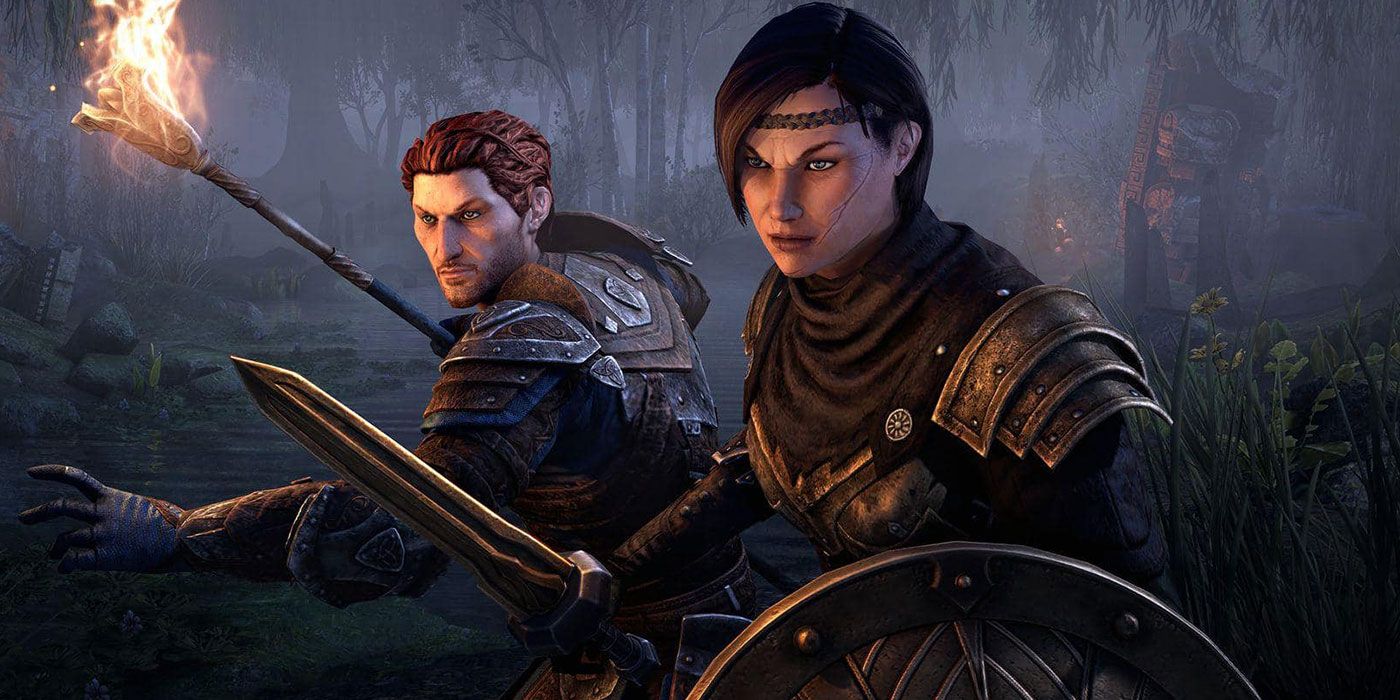
Any surprises or exciting things that fans should look out for with Blackwood from the art standpoint?
CJ Grebb: Well, it's been a long time since we've been to Oblivion as an Elder Scrolls player. We briefly step into that plane of Oblivion - The Deadlands, specifically - in Elder Scrolls Online. But this is the first time in quite a while we've gotten to really explore The Deadlands, and Dagon's plane of existence, in Oblivion and see it realized with all the visual bells and whistles that we can do in in a modern game with modern tools.
Surprises? Actually, it probably will come as no surprise to anybody who knows Elder Scrolls Online that Mehrunes Dagon was not idle up until the time that he caused the Oblivion crisis. He has been thinking about stepping foot into Tamriel for a long time, and exploring that aspect of it might send a few shivers down some players spines as they step into it themselves.
You've pretty well answered this, but when it comes to making environments feel visually distinct, how do you go about making them look different not only from one another but also from other fantasy games?
Jared Carr: Just from the beginning, in the earlier days of building the game as we were looking at it and looking at how we were working, we developed this process for how we would tackle flora and geography and geology. We really tried to tell the story of the landscape with the biomes, and so it goes back to concept.
We do zone paintings, we do elevation studies, we do plant guides, and we get a lot of real world reference to inform the plant life. For each zone we do, we come up with usually an average of two or three unique biome areas per zone, typically. And I guess we've arrived at a formula, and we make sure that each biome is well-designed within itself, and then those biomes at certain places in the zone crossover and overlap each other and transition from one to the other.
Depending on the zone - going back to Morrowind, it’s much more alien-looking, whereas other zones might be a little bit more real realistic.
CJ Grebb: I think what helps us to bring in distinct elements as well, after we're through the process of thinking it out and visualizing it and getting those speed paintings done and those elevations done, is that we have a unique place to go. We have such deep lore in the Elder Scrolls universe, and we have someone whose job it is to just know about the lore and to be able to inform us more. His job title is literally Lore Master.
We can go to him and the writers, who are well-versed in this stuff, and we can get those bits of lore that help us to further inform and further enhance whatever sort of biome work we've done. That goes into the idea of developing a cultural look, and developing the storytelling for whatever the new chapter or the new DLC is gonna expand upon. hen you have that much lore, and you have that much information, you can just go to someone and say, "Hey, tell me all about this culture. Tell me something that I should know about this culture," as we start to do the art and do the concepts.
That's something that no other game can really lean into; that specific Elder Scrolls lore. And every time we have a chance to really explore it, the better the game gets and the more inspired our artists can be to come up with something really original that nobody's ever seen before.
When there's that much material to draw from, Lore Master's an absolutely necessary position for someone to have. Just to archive it and organize it and make sure it gets in front of us, so that we're honoring the legacy of the games.
Jared Carr: And it actually gets more complicated than just straight up lore, because often lore and history are interpreted by the culture who's providing you that lore. So, there may be different perspectives on the same bit of history, and they may contradict each other - and you may have encountered an unreliable narrator. To keep track of all that, you look at not just what actually happened, but how it was interpreted to happen. And then how do you represent it? How do you tell the story? What elements do you include, and what do not include?
Looking to the future, is there anything that you're particularly excited about? I know there's probably not much you can share, but is there anything you can tease for fans of ESO about what comes next?
CJ Grebb: I'm not touching this one.
Jared Carr: Yeah, we can't obviously disclose our future plans. But I will mention that we have a really strong player base, as you probably know. And having all that support from all of our players and all of our fans is fantastic. It just means that we're going to be able to kick out awesome content for years to come, and that's super exciting for everybody. Our team is really engaged with our game and what we're making.
Elder Scrolls Online is available for PC, Mac, Stadia, PlayStation 4, and Xbox One. The Blackwood chapter launches June 1, 2021.
from ScreenRant - Feed https://ift.tt/3wzDzFK



0 Comments